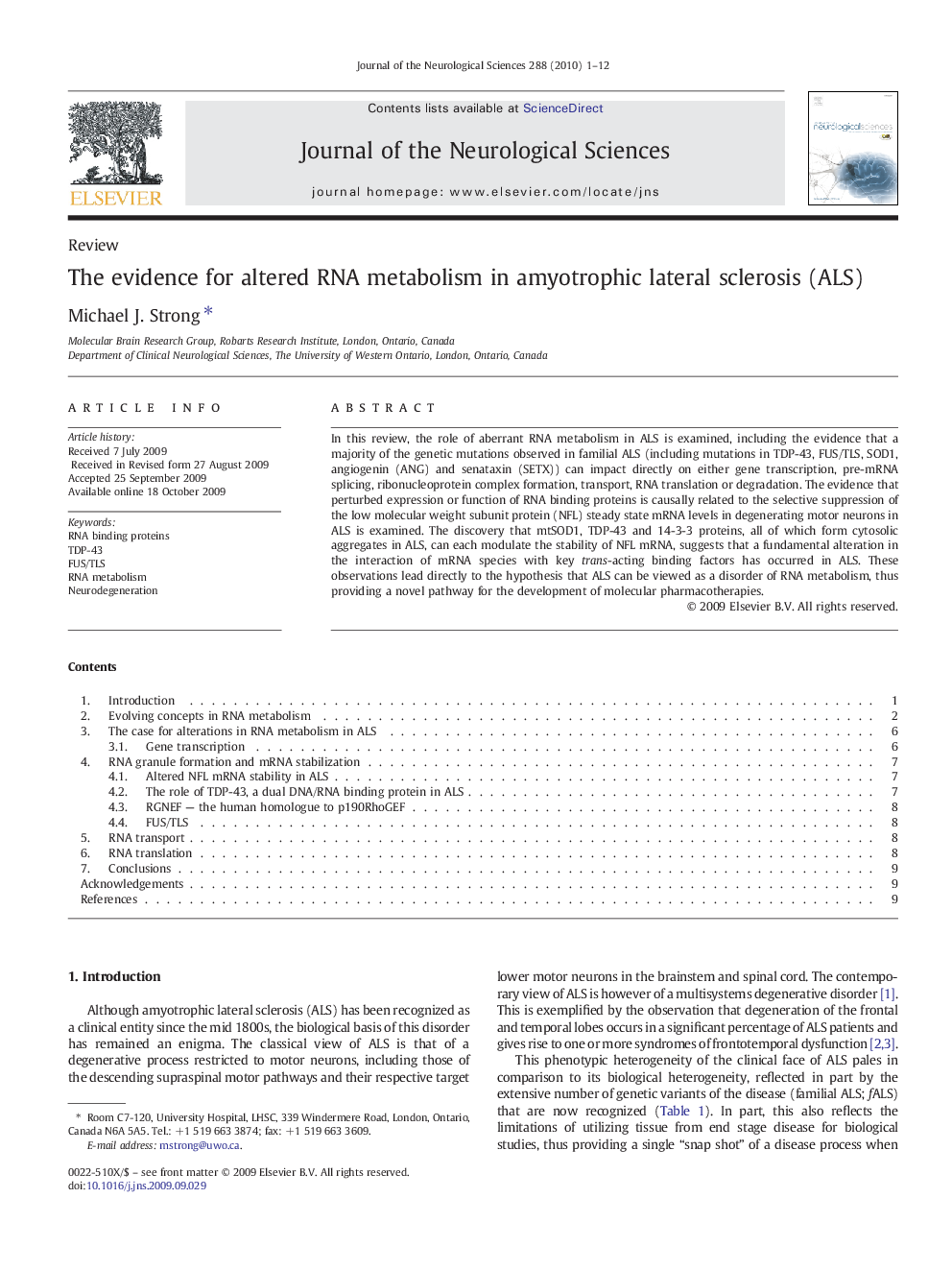| Article ID | Journal | Published Year | Pages | File Type |
|---|---|---|---|---|
| 1914748 | Journal of the Neurological Sciences | 2010 | 12 Pages |
In this review, the role of aberrant RNA metabolism in ALS is examined, including the evidence that a majority of the genetic mutations observed in familial ALS (including mutations in TDP-43, FUS/TLS, SOD1, angiogenin (ANG) and senataxin (SETX)) can impact directly on either gene transcription, pre-mRNA splicing, ribonucleoprotein complex formation, transport, RNA translation or degradation. The evidence that perturbed expression or function of RNA binding proteins is causally related to the selective suppression of the low molecular weight subunit protein (NFL) steady state mRNA levels in degenerating motor neurons in ALS is examined. The discovery that mtSOD1, TDP-43 and 14-3-3 proteins, all of which form cytosolic aggregates in ALS, can each modulate the stability of NFL mRNA, suggests that a fundamental alteration in the interaction of mRNA species with key trans-acting binding factors has occurred in ALS. These observations lead directly to the hypothesis that ALS can be viewed as a disorder of RNA metabolism, thus providing a novel pathway for the development of molecular pharmacotherapies.
